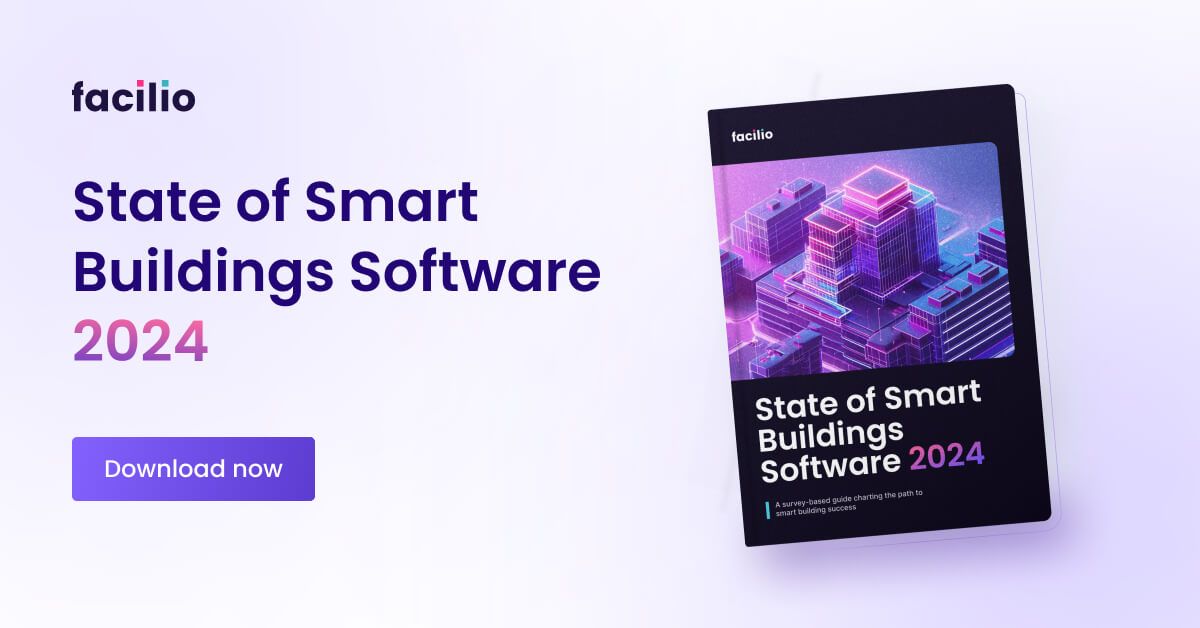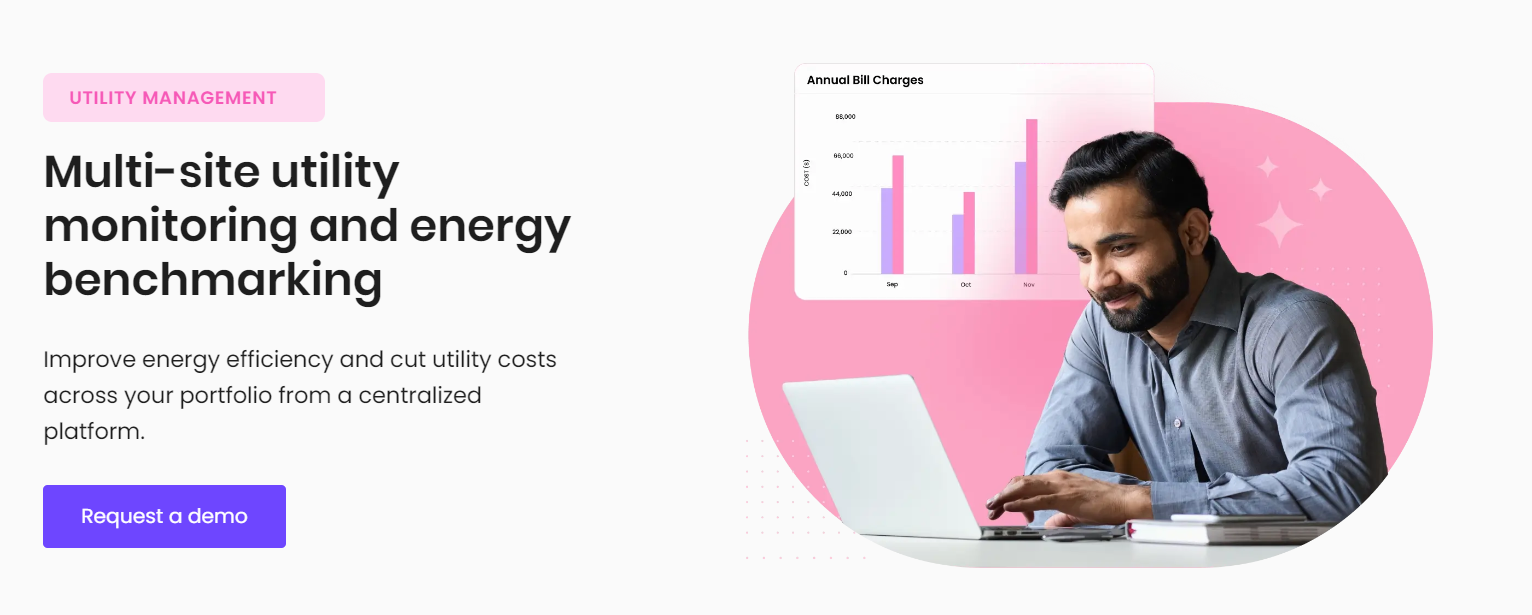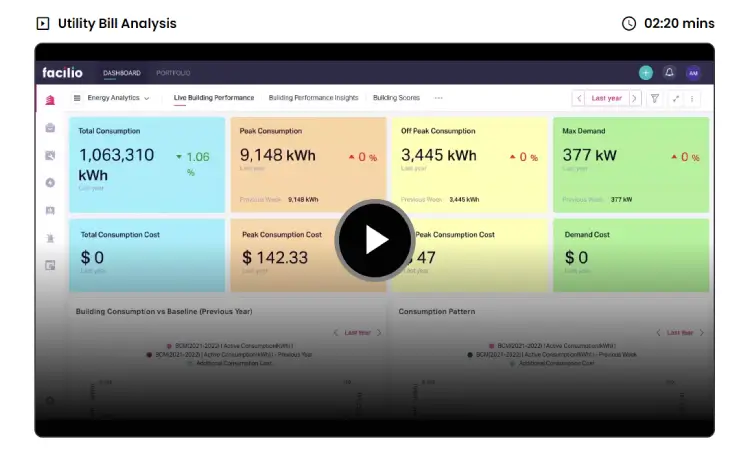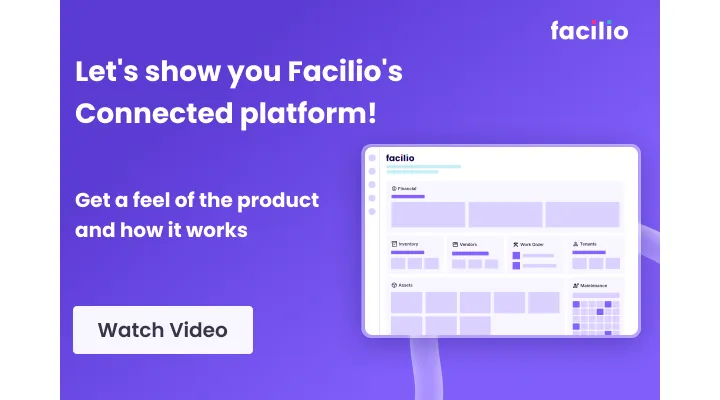Energy Management
Best Energy Management Software in 2024
With the Energy Act 2023 and Emission Trading Scheme looming large, all business owners are pushing to monitor and manage their energy use as the country transitions to a “net zero” energy system.
More than £27 million in fines were issued to 33 UK companies for breaches of the European Union Emissions Trading System, CRC Energy Efficiency Scheme, Energy Savings Opportunity Scheme, and Fluorinated Greenhouse Gas regime in the 2020-21 financial year.
Liz Parkes, Deputy Director for Climate Change at the Environment Agency, said, “The fines published today should serve as an important reminder for all organizations to ensure that they are compliant with these schemes and are playing their part in tackling climate change.”
The energy management software (EMS) market was valued at $32.08 billion in 2022 and is expected to grow at a CAGR of 15% until 2028. The key drivers of this robust growth include the following:

- Regulatory compliance and reporting requirements
- Corporate sustainability initiatives and ESG reporting
- Increasing energy consumption and demand
- Increasing adoption of renewable energy sources
- Energy efficiency and cost savings
- Technological advancements and IoT integration.
Energy management software helps you monitor and optimize your facility’s energy use. With the evolution of the Internet of Things (IoT), forward-facing and optimized real-time solutions are now available.

You can reduce your carbon footprint, lower utility bills, improve occupant comfort, and extend the lifespan of your equipment with such software. FMs can benefit from a wide range of functionalities, such as real-time data monitoring, automation of energy-saving steps, demand forecasting, and energy usage analysis.
In this article, we compare the energy management system software tools available in detail and examine customer reviews.
Why is energy management software increasingly important in 2024?
Businesses are bearing the brunt of rising energy costs, especially multi-site facilities.
In our survey on smart buildings in 2024, we elicited the responses of 180 real estate professionals, including facility directors and sustainability leaders. It was found that 41% prioritize remote command and control to reduce cost optimize energy efficiency, and occupant comfort.
Changes to Phase 3 of The Energy Savings Opportunity Scheme (ESOS) came into force in November 2023. New requirements include more detailed reporting, an action plan, and yearly progress updates.
ESOS penalties have also been increased as part of Phase 3, and fines are levied under the following heads:
- Failure to notify
- Failure to maintain records
- Failure to conduct an energy audit
- Failure to comply with a penalty notice
- False or misleading statement.
For each category, the initial fine is at least up to £5,000.
Complying with ESOS regulations has several advantages, including reduced energy consumption and carbon emissions, which, in turn, may lead to cost savings.
A software-led approach, like Facilio's platform, offers a comprehensive solution to tackle facility management challenges and turns energy management from a fixed expense into a strategic advantage. Here’s how
Problems plaguing the facility service industry:
- High energy costs: Facility managers often struggle with managing and reducing energy expenses, significantly impacting their operating budgets.
- Sustainability goals: With increasing emphasis on environmental protection, meeting sustainability targets has become crucial. However, aligning day-to-day operations with these goals is challenging without the right tools and insights.
- Data fragmentation: The data needed to manage energy and sustainability is often spread across multiple, disconnected systems. This fragmentation makes it difficult to gain a comprehensive understanding of building performance.
- Operational complexity: Managing multiple modern facilities involves dealing with numerous systems and processes, adding layers of complexity that can be hard to navigate efficiently.
Facility managers face numerous hurdles in achieving sustainable and energy-efficient operations. Some of these challenges include:
- Historical data access: Struggles with retrieving past data and lacking deep insights into the performance of assets and buildings.
- Monitoring energy usage: Inconsistent and ineffective methods for tracking energy, natural gas, and water consumption.
- Technician scheduling: Inefficiencies in managing maintenance and repair tasks due to the lack of optimized scheduling.
- Manual processes: Dependence on manual methods, including the use of Excel sheets for data management.
- Data fragmentation: Integrating and analyzing data from disparate systems.
An advanced software-led efficient solution, like Facilio's platform, offers a comprehensive solution to these challenges, turning energy management from a fixed expense into a strategic advantage. Here’s how:
- Centralized platform: Modern energy management software acts as a unified platform, integrating tools for access control, CCTV, HVAC, meters, CaFM, visitor management, etc., into one centralized system.
- 360-degree visibility: Provides a portfolio-wide overview, enabling system and asset performance tracking.
- Streamlined scheduling: Automated technician scheduling with automatic work order triggers, alerts-based systems modeled after predefined threshold deviations, and remote monitoring help streamline maintenance, facilitate repair tasks and reduce downtime.
- Comprehensive insights: Offers complete O&M insights with rapid fault detection and diagnostics (FDD), behavior management, vendor management, and space management.
- Optimized operations: Real time energy analysis and management help uncover energy savings and reduce carbon footprint.
An advanced energy management software would offer a modular, scalable energy and carbon efficiency solution addressing every energy management level. Here's how Facilio's platform transforms energy management:
Book a Demo
Energy management software: Quick comparison
Top 15 energy management software in the market today
Here is our analysis of the top energy management software based on essential features like energy reporting and data analysis automation, integrations available and scalability.
We’ll also include specific use cases so you can pick a software that suits your industry.
1. Facilio
Facilio leads the list as it is tailor-made to tackle the essential energy management needs of today, focusing on sustainability and efficiency.

Facilio is an AI-led software platform designed to optimize property operations and maintenance in real time. By leveraging its advanced IoT Edge Software Agent, Facilio brings a revolutionary approach to energy management, offering seamless integration and unprecedented control over building systems.
Facilio as a platform
- Drag & drop no-code workflow builder:
This functionality simplifies the process of setting up energy management protocols, creating custom workflows, and automating routine tasks, reducing the workload on facility managers.
- Service portals:
These portals give facility managers a centralized platform to monitor and manage energy consumption and maintenance activities.
- Common data model and infrastructure:
Facilio's cloud platform breaks down data silos, providing a centralized data access point for various operations and maintenance contexts. This unified data model supports smart building use cases by unlocking real-time functionalities through Facilio’s suite of O&M SaaS applications.
- Rule engine:
This enables facility managers to define specific conditions and actions for energy management. This feature allows for automated responses to energy usage patterns, ensuring optimal performance and cost savings.
Facilio as an IoT Edge Solution
Facilio’s IoT Edge software agent can be deployed remotely, ensuring swift and efficient integration across diverse building systems.
- Hardware agnostic:
It can work with various devices and systems without the need for specific hardware requirements. This flexibility is crucial for managing energy across different types of buildings and equipment. - Multi-protocol support:
Facilio supports multiple protocols such as BACnet/IP, MODbus TCP, and OPC UA XML. This ensures compatibility with various building management systems (BMS), facilitating comprehensive energy management.
- Bidirectional communication:
Facilio allows real-time data exchange and control between the software and building systems. This feature ensures data flows seamlessly, enabling immediate response and adjustments to optimize energy use.
What makes Facilio unique?
Facilio stands out in the space of property operations and facility maintenance for several compelling reasons. We have earned the trust of enterprises managing over 200 million square feet of space, collaborating with renowned companies across AMEA regions, North America, Europe, Australia, and Britain. Notable clients like Invest, Brookfield, and Al Tayer, among others, attest to our track record of delivering tangible results.

Through partnerships, Facilio has helped achieve remarkable energy cost savings of up to 10%-15% for prestigious institutions like the renowned Melbourne university, accelerating their sustainability objectives and driving bottom-line improvements.
Facilio aims to challenge conventional approaches to property management and energy optimization by identifying pain points and inefficiencies in existing systems and processes. It goes on to develop and implement solutions that eliminate the complexities many businesses are stuck with.
It does this by providing a unified platform that seamlessly integrates data and customizable workflows to streamline and optimize maintenance operations.
Regulatory pressures and the need for sustainability drive the demand for better energy management practices across industries like retail, manufacturing, healthcare, and more. However, implementing new tools can be daunting and costly. That's where Facilio steps in, offering a cost-effective, software-led approach to energy optimization.
Facilio's IoT edge and machine learning algorithms enable predictive operations at a portfolio-wide scale, delivering continuous sustainability. By consolidating data from diverse sources and leveraging cloud-based supervision, Facilio provides a holistic view of energy consumption and optimization opportunities.
Facilio’s toolkit for sustainability makes it a top favorite tool for many businesses. The features make life easier especially for commercial real estate professionals.
Best for: Retail, healthcare, schools & universities, corporate facilities, commercial portfolios, and facility management services
Key energy management features
- Consumption heatmaps & regression analysis
- Portfolio-wide energy comparison
- Deep HVAC monitoring
- Trend monitoring and heavy usage alerts
- EnPI-based energy benchmarks
- Anomaly detection and predictive diagnostics
- Fault detection & diagnostics (FDD) and root cause analysis (RCA)
Rating - 4.0 ⭐️⭐️⭐️⭐(Based on Capterra reviews )
Customer reviews
2. Galooli
Galooli is a tool that helps industries and enterprises manage energy usage and reduce energy costs efficiently. It uses cloud-based remote control capabilities to integrate with already existing hardware.
Best for: Galooli was built to cater to businesses in the telecommunications, micro grids, facilities, data centers and renewables industries.
Galooli is unique in that it is designed for remote operational facilities which is ideal for remote work.
Key features
- Remote energy asset monitoring
- Energy storage monitoring
- Live alerts
- Site performance history
- Track fuel levels and prevent fuel theft
- Battery monitoring and battery tracker.
Customer reviews
Pros
Many G2 reviews state that they love Galooli for its real time and remote control energy monitoring. They also love the live alerts and notifications.
Cons
Many customers complained about the user interface of the Galooli platform, as well as some bugs and errors.
3. Metasys
Metasys focuses on Building energy management efficiency. It allows operation leaders to make smarter decisions using information gathered by and displayed on a single platform.
Best for: Metasys was designed for buildings and is used by building owners and contractors to monitor energy consumption in their buildings.
Key features
- Smoke control
- Connecting different systems to a single platform
- Remote site management
- Integration with other controllers
- Compliance with IT laws.
Customer reviews
4. Energy Elephant
Energy Elephant is an intuitive energy management platform designed to help businesses track, manage, and optimize their energy usage efficiently.
Energy Elephant provides businesses with the tools they need to monitor and analyze their energy consumption data in real-time.
By gathering data from various sources, such as utility bills, meters, and IoT devices, Energy Elephant offers insights into energy usage patterns, identifies areas for improvement, and helps businesses make informed decisions to reduce costs and carbon emissions.
Best for: Universities, Tech Companies, Public sector, Retail, Real Estate.
Key features
- Data Aggregation
- Real-time monitoring
- Analytics and reporting
- Carbon emissions tracking
- Integrations
Customer reviews
5. Brightly Energy Management
Brightly Energy Manager is a cutting-edge energy management platform designed to empower businesses to take control of their energy usage and drive sustainability.
With intuitive tools and advanced analytics, Brightly Energy Manager offers businesses the insights they need to optimize energy consumption, reduce costs, and minimize their environmental footprint.
Key features
- Simple centralized dashboard
- Utility Tracking
- Advanced Energy Reporting
- Carbon Emissions monitoring
- Automated Bill Entry
Best for: Education, manufacturing, healthcare industries.
Customer reviews
6. Simble
Simble is known for a focus on energy intelligence and analytics. The goal is to improve productivity, identify energy saving opportunities and reduce operational costs.
Key features
- Real-time monitoring
- Energy analytics
- Demand response
- Alerts and notifications
- Carbon emissions tracking
Best for: Local government, healthcare, engineering, constructions, transport and logistics industries.
Customer reviews
7. Energis
Energis is a data-driven energy management tool. They provide actionable insights into all energy data, including consumption data, savings, ROIs and energy waste.
Key features
- Calculate energy savings, ROI and CO2
- Build custom energy management KPIs
- Reporting and data analysis
- Prevent power peaks and penalties
- Multi-site energy portfolios
Best for: Retail, Real Estate, Public sector, Hospitality and Leisure and Logistics industries.
Customer reviews
8. WatchWire
Watchwire is a cloud-based sustainability and energy management solution that helps real estate companies manage utility consumption, budgeting, and other sustainability initiatives.
It provides customizable dashboards and performance reports, so you can monitor individual key performance indicators (KPIs) or create custom views for a specific use case.
Key features
- Energy Activity Dashboard
- Alerts and Notifications
- Audit Trail
- Carbon Emissions Calculation
- Cost Tracking and Analysis
Best for: Large enterprises, medium and small businesses in manufacturing, retail, real estate industry and government.
Customer reviews
9. Vitality
Vitality is a cloud-based energy management software that helps businesses track and control utility bills and emissions in buildings.
Vitality prides itself as a platform created by energy managers for energy managers.
Key features
- Rate schedule optimization
- Heat maps
- Emissions Tracking
- Building intelligence
- Weather normalization
Best for: Utility management for large, small and medium sized enterprises .
Customer reviews
10. Eniscope
Eniscope is an energy monitoring and management tool that identifies energy waste and minimizes it for one building or thousands.
Eniscope uses hardware and software components to ensure accurate monitoring of internal energy data and provides customizable visual dashboards and reports.
Key features
- Remote multi-site monitoring and targeting
- Alerts and Escalations
- Real-time energy monitoring
- Historical reporting
- Third-party Integrations
Best for: single buildings or whole portfolio, irrespective of the industry.
Customer reviews
11. Strata
Strata by Cotopaxi is a web-based energy management software that enables data collection, analysis, and visualization to help businesses track energy consumption by source.
It helps employees track utility consumption, create maps and handle facility scheduling. The software also allows them to manage load levels and emissions monitoring processes. It’s a web only platform, not available on mobile devices.
Key features
- Data visualization
- Energy Portfolio Management
- Renewable Energy
- 3D models in augmented reality (AR) environments
- Third party platforms integration
Best for: Focuses on Strata firms and their Owners’ Corporations/Body Corporations
Customer reviews
12. Ekotrope
Ekotrope is a cloud-based home focused software that helps builders ensure energy efficiency.
It combines automated energy management with real-time collaboration with other energy professionals.
Ekotrope empowers building professionals to design, construct, and operate energy-efficient buildings by providing advanced modeling tools, compliance guidance, and performance analytics.
Key features
- Energy modeling
- Energy code compliance
- Energy optimization
- Integration with Building Information Modeling(BIM)
- Workflow Automation
Best for: Builders, homeowners and construction professionals.
Customer reviews
13. Rosmiman
Rosmimian is a platform for overall asset management. From facility management to facility maintenance, Rosmiman provides solutions for various industries.
Rosmiman provides energy sustainability for buildings as well as optimization. It integrates with IoT smart devices and sensors to provide real-time data.
Key features
- Monitor energy consumption
- Track utility costs
- Analyze energy usage patterns
- Integration with Third Parties
- Identify energy saving opportunities
Best for: Smart Cities, Real Estate, Traffic & Transport, Healthcare.
Customer reviews
14. Energy CAP
Energy CAP is a software that focuses on energy management and sustainability. It operates as a combination of the Energy CAP utility management, smart analytics and Carbon Hub solution.
The three-solution combination takes care of every stage of energy management, making it a holistic tool for energy managers, sustainability leaders and finance leaders.
Key Features
- Accurate utility bill data
- Facility benchmarking
- Tariff Analysis
- BI tool integration
- Machine learning behavior modeling.
Best for: This software was made for effective working and collaboration of energy managers, sustainability leaders, and finance leaders in various industries.
Customer reviews
15. Spacewell Energy
Spacewell Energy (Dexma) software is an energy management software that works with data-driven Energy Intelligence.
It helps businesses optimize their energy management and reach their sustainability goals.
Key features
- Benchmarking and audit
- Real-time monitoring
- On-demand control
- Automated reporting and alerts
- Energy apps market
Best for: ESCOs, Utilities, OEMs, Energy Consultants & Green Corporates.
Customer reviews
How to choose the right energy management software for your business
Choosing the right energy management software for your business can be tricky, but it’s worth putting in the effort to make sure you find one that serves all your needs and is compatible with your device.
Here are some of the most important factors to consider:
- System integrations: The software should be compatible with any hardware or IoT devices you plan on using, as well as any third-party applications or cloud platforms. You also want to make sure that the software is compatible with any other systems you use, such as building management and security.
- On-premise vs. cloud deployment: How easy is it to access data?
If you plan on tracking energy usage in real time, then a web-based application will be your best option. You should also consider whether the software has offline capabilities if you don’t have reliable internet access at all times. - Ease of use: Facility managers and other stakeholders should be able to easily use and collaborate via the platform.
- Scalability: How easily can you expand the software to include additional features? You want a system that will grow with your needs.
If you’re just starting out, you'll need something basic and affordable; if you plan on expanding into other areas of building management, you'll need one that offers more versatility.
Alternatively, you can opt for an O&M platform like Facilio, which is perfect whether you're just starting out or looking to implement advanced energy conservation strategies.
Aside from energy management, Facilio enables 360° operational insights for the entire portfolio with:
- Connected CMMS
- Maintenance management
- Work order scheduling and management
- Asset life cycle management
- Contractor management
- Visitor/occupant experience management
- Field service management
- Workplace management
Trends shaping enterprise energy management in 2024
In 2024, several trends are shaping enterprise energy management:
1. Adoption of AI and Machine Learning
AI and machine learning are becoming increasingly prevalent in energy management systems, allowing for more sophisticated analysis of energy data, predictive maintenance, and optimization of energy usage. According to this research, AI for predictive control led to a reduction in energy use by 20%.
This shows that in the near future, and even now, the role of AI for energy management will keep increasing.
2. Focus on Renewable Energy Integration
While many businesses are keen to explore renewable energy contracts, with 50% considering them in the near future, several significant challenges act as blockers:
- High capital investment: Implementing renewable energy solutions such as solar or wind power requires substantial initial capital. This investment can be a bottleneck for many enterprises, especially those with tight budgets or other competing financial priorities.
- Slow return on investment: Renewable energy projects often have long payback periods, which can make them less attractive compared to other energy efficiency measures that offer quicker returns. This slow RoI can discourage businesses from committing to large-scale renewable energy initiatives.
- Complex integration and management: Integrating renewable energy sources into existing energy management systems can be complex and requires advanced management tools. Without effective systems to manage and optimize both renewable generation and consumption, the benefits can be limited.
3. IoT and Sensor Technology
The Internet of Things (IoT) and sensor technology continue to play a significant role in energy management by enabling real-time monitoring of energy usage, equipment performance, and environmental conditions. This data can be used to identify inefficiencies, optimize operations, and implement predictive maintenance strategies. The health industry is 50% more likely to benefit from IoT in energy management in the near future.
4. Energy-as-a-Service (EaaS) Models
EaaS models are gaining traction, allowing enterprises to outsource their energy management needs to third-party providers. These providers offer comprehensive solutions that include energy monitoring, optimization, and financing of energy efficiency projects, providing cost savings and reducing the burden on internal resources.
However, relying on third-party providers can lead to losing control over critical energy management decisions and may involve long-term contracts with limited flexibility.
Furthermore, dependency on external providers can slow response times when addressing urgent issues. Enterprises may also face challenges aligning the provider's goals with their sustainability objective.
5. Regulatory Compliance and Reporting
Enterprises today face significant challenges in keeping up with regulatory compliance requirements that vary by state, country, and asset type. For instance, refrigeration units must adhere to specific regulations concerning refrigerants and their environmental impact.
Managing compliance across multiple sites and jurisdictions is particularly daunting. Each location is subject to unique regulatory demands, complicating the task of maintaining uniform compliance standards.
The need for a robust, automated solution to centralize compliance management is clear. Such a system can seamlessly track and report energy usage and emissions, ensuring adherence to all relevant regulations across various sites and asset types. Automating these processes helps organizations avoid the pitfalls of manual compliance tracking, reduces the risk of non-compliance, and streamlines reporting.
6. Energy Management and Carbon Target Deficits
The focus in energy management is shifting from merely managing energy consumption to achieving carbon reduction targets.
Traditional processes often involve time-consuming steps, and long time-to-value addresses these issues. Moving forward, enterprises seek to eliminate these bottlenecks and leverage technology and data for portfolio-wide gains.
Key aspects of this shift include:
- Cloud-based optimization: Closing the efficiency loop without human intervention through cloud-based solutions
- Optimizing physical retrofits: Using data to enhance the efficiency of physical retrofits such as heat pumps and grid electrification
System faults and anomalies: Proactively identify system faults and energy anomalies to automate corrective actions via condition-based maintenance - Demand reduction: Benchmarking utility data and metering as the first step to achieving net-zero emissions
- Comprehensive energy management: Opening up BAS data to address system-level inefficiencies, visualize portfolio-wide insights, and take stock of all possible energy conservation measures (ECMs) in one place.
7. Data Privacy and Security
As energy management systems collect and analyze large amounts of sensitive data, there is a growing emphasis on ensuring data privacy and security. Enterprises are implementing robust cybersecurity measures to protect against threats such as data breaches and cyberattacks.
Choose a platform that empowers your energy management initiatives, now and forever
We've been talking about software that helps with sustainability and efficiency in your business.
Imagine a platform that not only enables you to optimize energy performance across your multi-site facilities, but also allows you to remain compliant and realize savings through real-time analytics.
It's a big win for your business and the planet. And while there are many ways to get there, choosing the right software is the first step.
Facilio’s AI-driven property operations platform empowers real estate owners to consolidate building data, optimize performance, and manage portfolio operations seamlessly from a single, centralized hub.
Enterprises in commercial office spaces, healthcare, retail, and educational sectors worldwide use Facilio to reduce operational expenses, enhance net asset value, and mitigate operational liabilities.Let us show you what Facilio can do—book your demo today!


